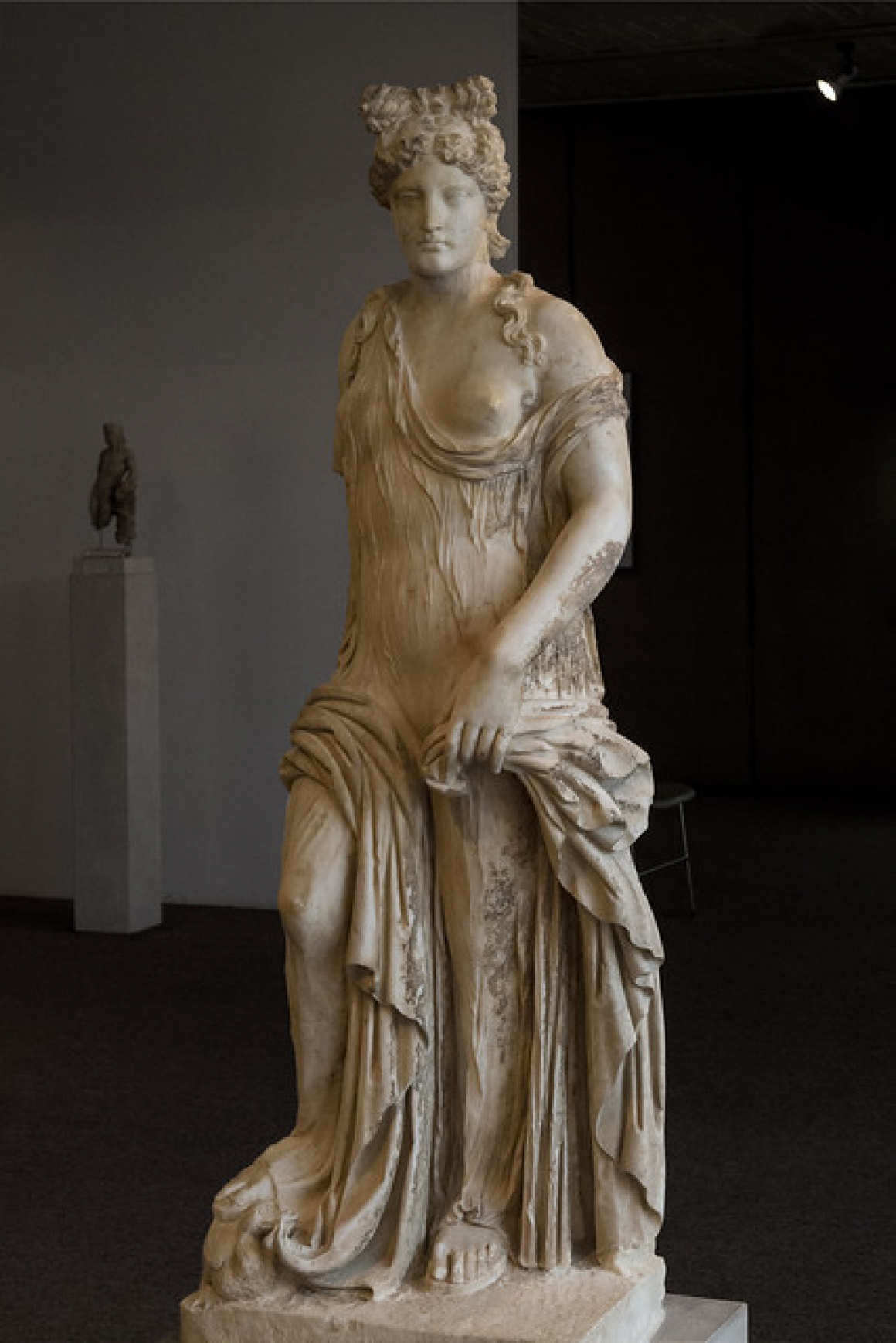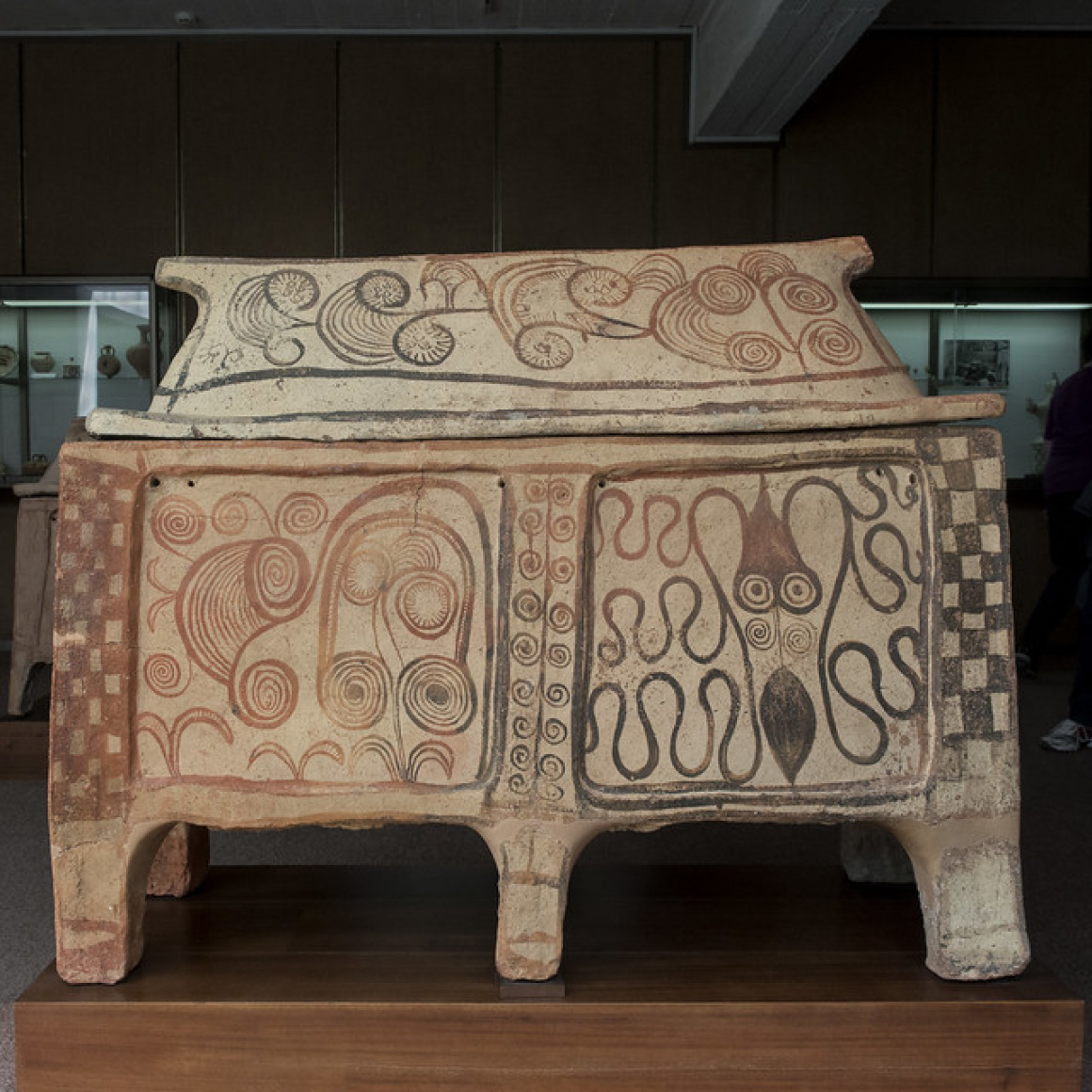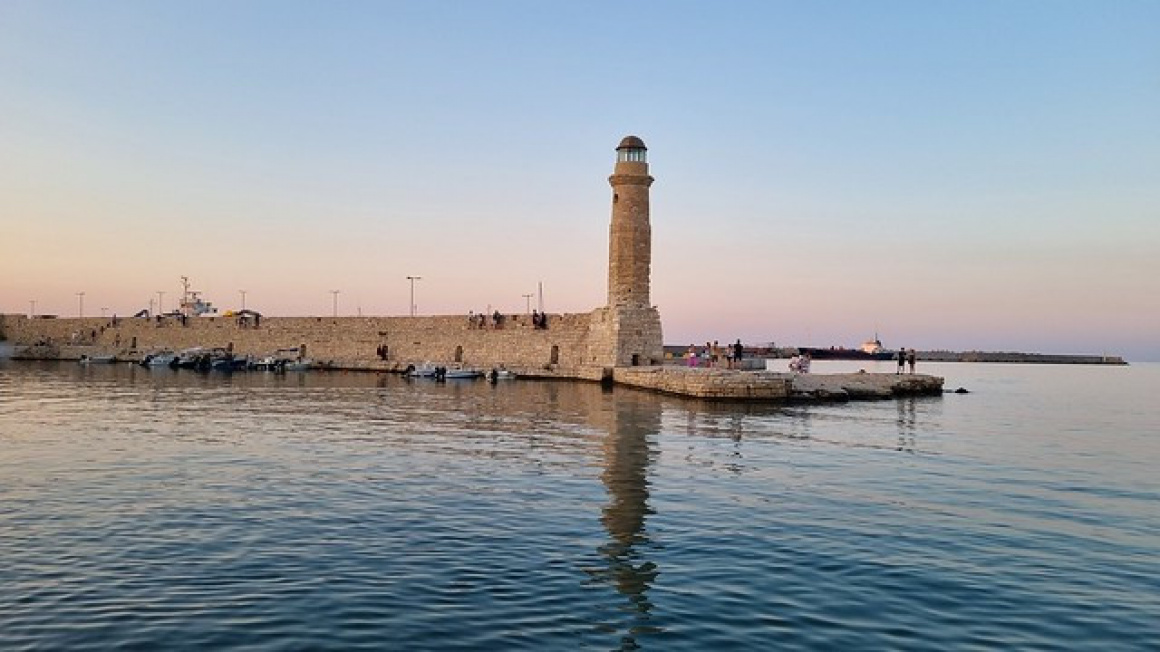In the charming coastal city of Rethymno, known for its Venetian harbour and fortezza, lies a smaller but significant museum that holds the keys to the region's ancient past: the Rethymno Archaeological Museum. While more modest than its Heraklion Archaeological Museum counterpart, this museum is a delightful surprise, showcasing important finds from the prefecture of Rethymno – a region rich in Minoan settlements, ancient sanctuaries, and necropolises. After a long period of closure and relocation, the museum recently reopened in a new modern space (as of 2021), which means the exhibits are freshly curated and accessible. Visiting the Rethymno Archaeological Museum offers a more focused look at local antiquities, including treasures from the Early Minoan cemetery of Armeni, the classical city of Eleutherna, and various Greco-Roman sites around Rethymno. It's especially valuable for travellers who explore sights like the Sacred Cave of Zeus at Ideon or the Orthi Petra necropolis, as many artifacts from those sites are displayed here. The museum also highlights the continuity of habitation from prehistoric through Roman times in this area of Crete. And because it's not very large, you can easily take it in within an hour, making it a perfect cultural stop while wandering Rethymno's old town.

 'Venus Genetrix' - Attribution: Egisto Sani
'Venus Genetrix' - Attribution: Egisto SaniA Museum Reborn
For years, the Rethymno Archaeological Museum was housed in a small Ottoman building near the Fortezza, and space was limited. Now it has moved to the Church of St. Francis (a beautiful Venetian church structure) with a new layout. The relocation was part of a broad project that also saw the opening of the Eleutherna museum. When you enter, you are greeted by airy rooms and well-lit cases – a pleasant environment to view antiquities.
The exhibits are organised mostly by site and period. Here are some highlights and key sections:
Prehistoric Rethymno – Stone & Bronze Age
The museum begins with some simple but evocative finds: stone tools and pottery from the Neolithic cave of Gerani (west of Rethymno) indicating very early human presence. Then Early Minoan (around 3000-2000 BC) pottery and figurines from various tombs in the region. Notably, there are finds from the Gerani cave, Melidoni Cave, and hilltop sites in the Amari valley. These include some cute Cycladic-type figurines that hint at trade links with the Cyclades even in the early Bronze Age.
Armenoi Late Minoan Cemetery
One of the jewels of this museum is the collection from the Late Minoan necropolis of Armeni (c. 1400-1200 BC). Armeni, located just 8 km south of Rethymno, is a large Minoan cemetery where over 200 chamber tombs were excavated, many intact with rich grave goods. The museum showcases an array of these grave offerings: clay larnakes with painted motifs, bronze weapons, stone vases, jewellery and seal stones. You can see a boar's tusk helmet assembled from boar tusks found in one tomb – a highlight that draws a direct parallel to Homeric/Mycenaean customs. It's rare and impressive; the tusks are arranged on a reconstructed framework to show what it looked like. There are also bronze double axes and spearheads from Armeni, signaling warrior burials. One display has the sealstones and jewellery: diminutive engraved gems with scenes of animals or cult, and gold rings or beads. Particularly poignant is a child's burial find – small terracotta toys (like animal figurines) placed with the child, emphasising human touch across millennia. Armeni's finds, richly decorated, convey the life of an elite Minoan community in the Rethymno area. The painted larnakes in particular are fascinating – they have maritime and geometric motifs; one shows a hunting scene. These are essentially small ceramic sarcophagi and are uniquely Cretan (used during the post-palatial period). If you have visited the Armeni site, seeing the objects here completes the picture.
Ancient Eleutherna
Many marquee pieces from Eleutherna (especially the Orthi Petra necropolis) were moved to the dedicated museum at the site. However, the Rethymno museum still retains some Eleutherna artifacts or complementary items. For instance, you might see a marble female torso or votive clay body parts from the Artemision at Eleutherna – pilgrims would dedicate clay legs or arms for healing at sanctuaries.
Classical/Hellenistic Era
Rethymno's prefecture had a number of classical cities, often overshadowed by Knossos Palace or Gortyna, but important locally: Axos, Lappa (Argyroupoli), Cisamus (Kissamos) partly, and Syvritos in Amari. The museum has coins from these cities (like silver and bronze coins with city emblems – Axos had Zeus, Lappa had a dolphin, etc.), plus fragments of sculpture. One notable piece is the stone funerary stele of a warrior from ancient Rithymna – the area's classical city that gave modern Rethymno its name. There's also a lovely small bronze Aphrodite figurine and terracotta figurines of deities.
Roman & Early Byzantine
Here you'll find mosaics and marble architectural pieces. Rethymno's region saw prosperity in Roman times – for example, Lappa was rebuilt in Roman style with baths, and some floor mosaic sections might be displayed. The museum might have portions of a Roman mosaic floor with patterns or figures. They also show fine Roman pottery (sigillata), glassware, and items like oil lamps with Christian symbols from early Byzantine graves. Of special note could be finds from the archaeological site of Stavromenos (east of Rethymno) where a 5th century AD basilica once stood – possibly a mosaic inscription or carved marble chancel screen pieces.
Special Exhibit Pieces
Often small museums pick a few star items to highlight. The Rethymno museum's star items likely include: The Boar's Tusk Helmet from Armeni; a bronze helmet of a different type from a Geometric warrior grave, found somewhere like Syvritos; a group of clay statues from the Peak Sanctuary of Vrysinas (a mountain near Rethymno) – where dozens of clay figurines of worshippers and animals reveal unique Minoan religious practices; a large pithos with relief decoration from the Minoan villa of Apodoulou in the Amari valley; an ivory comb or mirror handle showcasing intricate craft; and a portion of the Homeric-era tomb group from Eleutherna – an early Iron Age burial of women with lavish gold finds (even if most remains at the dedicated Eleutherna museum). In general, the displays emphasise continuity – for instance, a Roman statue of Apollo found at Eleutherna contrasted with a Minoan bronze votive from 1000 years earlier, highlighting how worship sites endure.
Visiting the Museum
Being in Rethymno's old town, the museum is easily reached on foot if you're staying in or visiting the city. Specifically, it's now near the Great Gate (Megali Porta) area, since St. Francis Church is not far from the main entrance to the old town's core. It's a stone's throw from pedestrian streets with shops and cafes, so you can combine it with a leisurely stroll, maybe after a morning coffee.
The museum is open daily except Tuesdays (typical for Greek sites). Hours are usually 8am-8pm in summer, and shorter in winter. A ticket costs approximately €4 (with discounts for EU seniors and free for under 25 EU youth). It is relatively quiet – never as busy as the Heraklion museum – so you can enjoy it at leisure.
If you've come from the Eleutherna museum or plan to visit it, know that Rethymno's museum complements that experience by covering a broader variety of finds from multiple local sites.
I'd budget about 45 minutes to see everything properly, or up to 1.5 hours if you like to read all the descriptions and examine every bead and coin. The staff are often friendly and may offer tidbits of information if you show interest in a particular piece.
There is no cafeteria inside, but there are plenty of options just outside. One tip: the museum, being new, might occasionally have a star piece on loan or a special exhibit. For example, when the Eleutherna museum opened, some items were rotated. Alternatively, if a new excavation in Rethymno (such as a mosaic discovery during building works) occurs, they might display it temporarily. Always ask if any recent notable find is on display. Photography is usually allowed (without flash), so it's nice to capture those intricate larnax paintings or the helmet assembly.

 'Minoan Larnax V) – Octopus and Papyrus' - Attribution: Egisto Sani
'Minoan Larnax V) – Octopus and Papyrus' - Attribution: Egisto SaniTying It Together with Site Visits
For those doing a cross-island archaeological tour, it is fascinating to compare the differences between each region's finds. For instance, comparing the styles of larnakes from Armeni (Rethymno) versus those at Knossos Palace or Phaistos reveals subtle variations in motif emphasis and colour. The Rethymno museum helps highlight that the so-called “Minoan” culture was not monolithic; each area had its own distinct artistry.
If you plan to visit the Armeni necropolis, consider seeing the museum either before or after your site visit. At the Armeni site, you enter tombs where most objects are not left in situ (except for one reconstructed larnax), so the museum gives context and meaning to what you experience on site. Likewise, if you are heading to the Eleutherna/Arkadi Monastery region, it can be beneficial to visit both the dedicated Eleutherna museum (for that specific site) and the Rethymno museum for a broader historical context.
For those visiting the Ideon Cave up on Nida Plateau – many offerings from Ideon Cave (the mythic birthplace where Zeus was raised) ended up in the Heraklion museum, though Rethymno museum might house some related pieces such as bronze shields or cult figurines. Check the exhibits on “mountain sanctuaries” for additional context.
Local Insight
The Rethymno museum also underscores how central the region was in archaic times. Eleutherna is thought by some to possibly correspond to Homer's “Rithymna”. Seeing early material from Eleutherna – such as the famous “Polyandrion”, a warrior's bone urn with Homeric references – reminds you that Crete participated in the Greek world's heroics.
Finally, an interesting note: Up until the move, the museum's marquee piece was arguably a Roman statue of Aphrodite (found in Rethymno's Paleokastro). There's a story – it was discovered by chance and ended up in Athens but, after appeals, was returned to the museum. Such pieces emphasise local pride. The museum even has a corner dedicated to its own history, which dates back to 1887 when local intellectuals began collecting artifacts, making it one of Greece's older regional collections.
In short, the Rethymno Archaeological Museum is immersive yet compact, offering a golden thread through Rethymno's timeline: from Stone Age farmers to Minoan warriors, Greek citizens to Roman converts. When you later wander Rethymno's alleys or gaze at Mount Ida on the horizon, the stories from the museum will echo—reminding you that beneath these modern streets and hills lie layers upon layers of human history now revealed. It's highly recommended to include this museum in your itinerary to complete your picture of Crete's historical mosaic.


